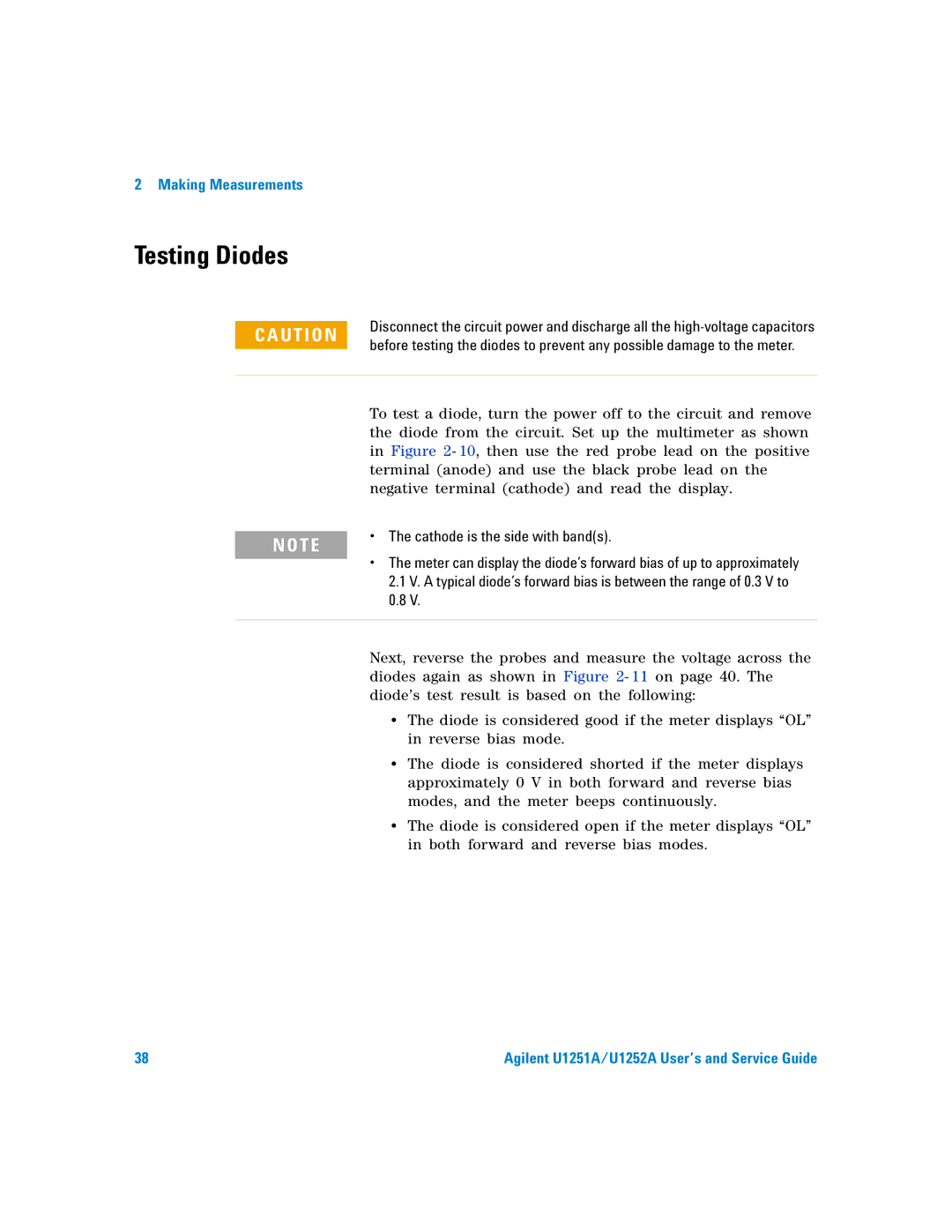
2 Making Measurements
Testing Diodes
C A U T I O N
Disconnect the circuit power and discharge all the
N O T E
To test a diode, turn the power off to the circuit and remove the diode from the circuit. Set up the multimeter as shown in Figure 2- 10, then use the red probe lead on the positive terminal (anode) and use the black probe lead on the negative terminal (cathode) and read the display.
• The cathode is the side with band(s).
•The meter can display the diode’s forward bias of up to approximately
2.1V. A typical diode’s forward bias is between the range of 0.3 V to
0.8V.
Next, reverse the probes and measure the voltage across the diodes again as shown in Figure 2- 11 on page 40. The diode’s test result is based on the following:
•The diode is considered good if the meter displays “OL” in reverse bias mode.
•The diode is considered shorted if the meter displays approximately 0 V in both forward and reverse bias modes, and the meter beeps continuously.
•The diode is considered open if the meter displays “OL” in both forward and reverse bias modes.
38 | Agilent U1251A/U1252A User’s and Service Guide |
